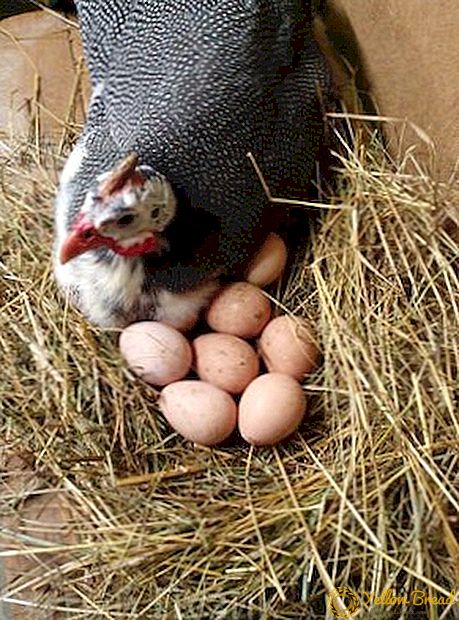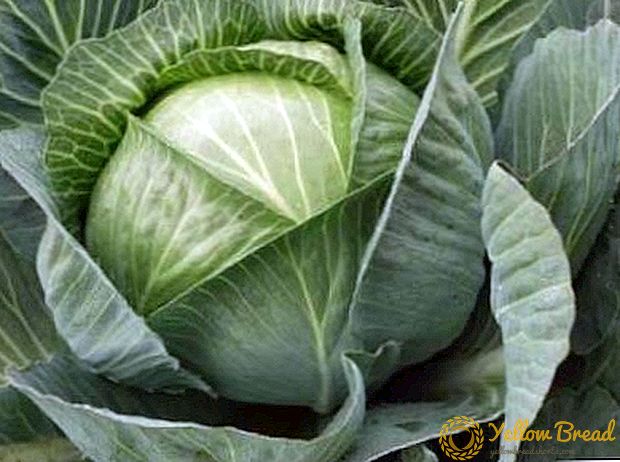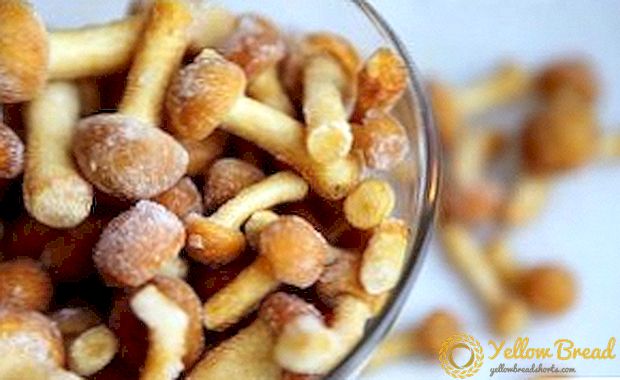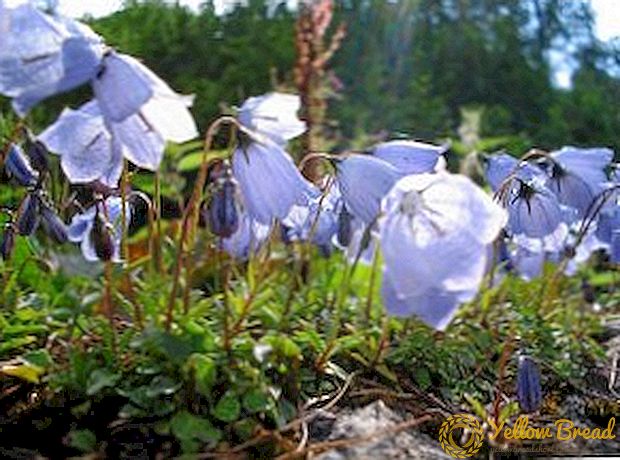 Experienced gardeners know how difficult it is to achieve maximum decoration of the garden. Perennial plants alone will not succeed, because among annuals there are much more extraordinarily beautiful flowers. To such, with amazing flowering, applies Drummond phlox, which, with certain knowledge, you can grow at home. Everything you need to know about this welcome guest of the garden, when to plant it and whether it is possible to grow from seed - all this will be discussed in this article.
Experienced gardeners know how difficult it is to achieve maximum decoration of the garden. Perennial plants alone will not succeed, because among annuals there are much more extraordinarily beautiful flowers. To such, with amazing flowering, applies Drummond phlox, which, with certain knowledge, you can grow at home. Everything you need to know about this welcome guest of the garden, when to plant it and whether it is possible to grow from seed - all this will be discussed in this article.
- Description
- Popular varieties
- One year old undersized
- Constellation
- star Rain
- Terry phlox
- Growing from seed
- Features of planting seeds
- Sowing seeds in open ground
- Growing by seedling
- Care during cultivation
- Diseases and pests
Description
Of course, to make sure that the presence of Drummond's phlox in your garden is in order, you first need to get acquainted with this plant, having learned about all its benefits.

For the most part, phloxes are perennial, rather tall plants, which differ from the specified annual. Few people want to create impassable thickets in their rock gardens, on curbs or simply on flowerbeds, so a relatively low Drummond phlox would be a much more suitable option.
It will not be higher than 50 cm, and the majority of varietal variations reach only 30 cm. The diameter of the flowers is 2 cm, but due to the fact that they are organized into inflorescences (bumps or umbrellas), it cannot be said that they look too small. It is thanks to these inflorescences that the bush is luxuriant and highly decorative, which you can see in the period of active flowering (from June to October or even November). The color palette of different plants varies depending on their particular variety. It can be yellow, white, purple or even dark red.
Drummond's phlox bush is branched, and in addition to flowers collected in inflorescences, opposite, oval-lanceolate leaves are still clearly visible on it. 
TO the main benefits of growing the described version of the annual phlox (you can even immediately from the seeds) include the following:
- due to the variety of varieties, you can pick up plants of different heights and colors (specimens of 10-15 cm are suitable for "carpet" soil cover, and an average of 20-30 cm and high 40-50 cm will be excellent bright spots on mixborders or flower beds);
- all flowers possess highly resistant to sunlight and do not fade, which means that they can be planted even in the most lighted areas;
- plants are not afraid of frost (stand up to -5 ° C) and drought;
- able to settle on their own;
- undemanding in terms of care.
 I must say that all these advantages and caused the mass distribution of the flower in the regions of our country.
I must say that all these advantages and caused the mass distribution of the flower in the regions of our country.Popular varieties
Among the considerable number of varietal variations of Phlox Drummond, only some of them have attracted domestic growers. Let's find out why.
One year old undersized
Such phlox reach a height of about 20 cm and are characterized by a fairly strong branching.Just like the others, they can be of the most diverse colors and create a motley carpet at the landing site. This variety will be an excellent option for the decoration of a loggia or balconies, although it is often used for decorating the backyard. 
Constellation
This species is represented by voluminous bushes, decorated with numerous bright flowers, reaching a diameter of 3 cm. Their color varies from pure white to bright red color, so this variety has become an excellent option for creating beautiful bouquets.
The thyroid inflorescences exude an incredible scent that attracts not only insects, but also people very much.
star Rain
This variety is represented by fairly high bushes, with lateral and erect stems that reach a height of 50 cm. The flowers on them look like stars, which is why the plant got its name. They are very fragrant and bloom long enough, because this variety is characterized by high frost and drought tolerance. However, for abundant flowering and high ornamentation, it is important to plant the plants in sunny areas (in the shade the bushes practically do not bloom). 
Terry phlox
Bushes with double flowers reach a height of 30 cm, and their dense inflorescences are located close enough to each other. The color palette of petals is quite extensive and may include both cream and red shades. Mostly terry phloxes are grown for the purpose of decorating loggias and balconies, as they are well suited for pots that are simply enough to be placed in any corner of the room. 
Growing from seed
It is always easier to purchase ready-grown saplings of one or another plant for further breeding on your plot, but as for Drummond's phlox, it is also great for seed reproduction, you just have to be patient.
Features of planting seeds
If you decide to grow Drummond phlox from seed, then you should be aware of some of the features of this process. First, the planting can be performed with the arrival of heat, that is, at the beginning of May, and towards the end of autumn, since the seed material of this plant is characterized by very good winter hardiness. 
In regions with characteristic warm winters, phloxes can be planted even in winter (in December or January), for which in autumn time one should stock up a bucket of black earth and leave it in relatively warm conditions for storage. At the beginning of winter it is useful to wait for heavy snowfalls so that the snow completely covers the ground. Be sure to tramp the beds where you plan to sow plants.
When exactly to plant phloxes in open ground: in spring or autumn is a personal matter of every gardener, however, if you want to achieve lush flowering already this year and minimize possible losses from freezing, then the first option will be most optimal.
Sowing seeds in open ground
The reproduction of phlox Drummond phlox is mainly practiced by people who have enough space to accommodate pots with young plants. If you do not belong to their number, then you should give preference to sowing immediately in open ground. Despite the possibility of "podzimney" landing, it is better to perform the procedure with the arrival of spring, in early May. In the pre-prepared area you need to make shallow grooves and pour them with water, allowing moisture to be absorbed. Seeds are placed in one place with 2-3 seeds, leaving 15 cm of free space between adjacent "clusters".
Even if all three germinate, there is nothing terrible about this, since the weakest can always be pinched off. The first shoots can be expected within two weeks after planting, and before this time it is better to cover the site with covering material. This will help maintain proper humidity levels. After the germination of the first shoots, it is necessary to loosen the soil and you can begin to apply fertilizer: first nitrogen, and with an interval of several weeks and complex compositions. Of course in that case bloom will begin no earlier than June-July, but will definitely last almost until the end of autumn.
When sown on a bed in autumn, seeds are placed in the ground in October or November, and if there is already snow on the ground, it must first be removed by scattering the seeds directly on the frozen soil (the distance between the seeds should be about 4-5 cm). 
Growing by seedling
Drummond phlox can be planted in spring not only in open ground, but also in closed, specially prepared containers or boxes. So, starting in March, the exchangeable material is sown on seedlings, and to get good and strong plants, the containers with seedlings should be placed in a fairly warm room, with temperature indicators at + 18 ... + 21 ° C and high humidity (you can cover the boxes with damp diaper).In such conditions, young plantations should be the first 5-10 days after sowing, but as soon as the first sprouts appear on the soil, be sure to provide them with moderate soil moisture, which will help prevent the appearance of rot on the roots and limit growth. 
If you want to fully enjoy the flowering plants at the end of spring, then the seed should be sown in seedlings at the end of March. The first shoots will appear in 1-2 weeks, and after three weeks the young seedlings can begin to dive, planting in pots of several pieces. Further, as in the previous embodiment, the seedlings should be fertilized three times, with an interval of 10 days and limited to watering. For a lush growth of the bush, the seedlings are pinned in the phase of 5-6 leaves, and it can be moved to the site in May.

Care during cultivation
Care of grown seedlings has its own characteristics. We have already said something, but now we will consider all the details more closely.In fact, there is nothing difficult here, and the main thing is to remember the basic rules of this process and strictly follow them. These include the following:
- boxes with seedlings should be in the most lighted place so that the plants do not stretch out in height and not lose their attractiveness;
- optimal temperature conditions of the content will be values within + 18 ... + 21 ° C;
- in the first days after planting, the seed containers should be covered from the scorching sun, covering them with a newspaper or a dark film;
- watering should be carried out as the top layer of the soil dries to prevent the formation of a serious crust;
- every week, seedlings must be fed with organic and complex fertilizers, alternating between them;
- as soon as the plants have their own sixth leaf, pinch the top, because this way you will have a more compact bush with lush volumes;
- starting from April, it is useful to carry out hardening of young plants, carrying out boxes with them on the balcony or in the garden and leaving them there for several hours;
- planting seedlings in open ground should be carried out not earlier than mid-May, and before that they are twice fed with mineral compounds.

In the future, after planting in open ground, Phlox Drummond will also need appropriate care. At a minimum, they will need to regularly add fluid to the soil, carefully loosening it and timely remove faded flowers. However, in order for the decorativeness of the plant to remain at the same high level, delighting you for a long time with its brightness, you should not forget about continuing to make nutrient formulations (complex fertilizers), approximately once every two to three weeks. As practical experience of many gardeners testifies, without such dressings the period of flowering of Drummond's phlox will significantly shorten, while fertilizer application even after complete cessation of flowering activates a new wave in two weeks.

Diseases and pests
An important component of care for the described annual phlox is timely prevention of diseases and pests.Even a proper fit, with pre-treatment of planting material, cannot guarantee the absence of filamentous tiny worm, feeding on sap of plants. The affected specimens will have to be immediately dug up and destroyed (better burned), and the soil treated with nematocide, adhering to the interval 1 time in three weeks.

With quite a bit of effort, you can watch the beautiful flowering of your Drummond phlox, which will surely become a bright accent of your site or a great addition to your home interior, when grown in pots.






